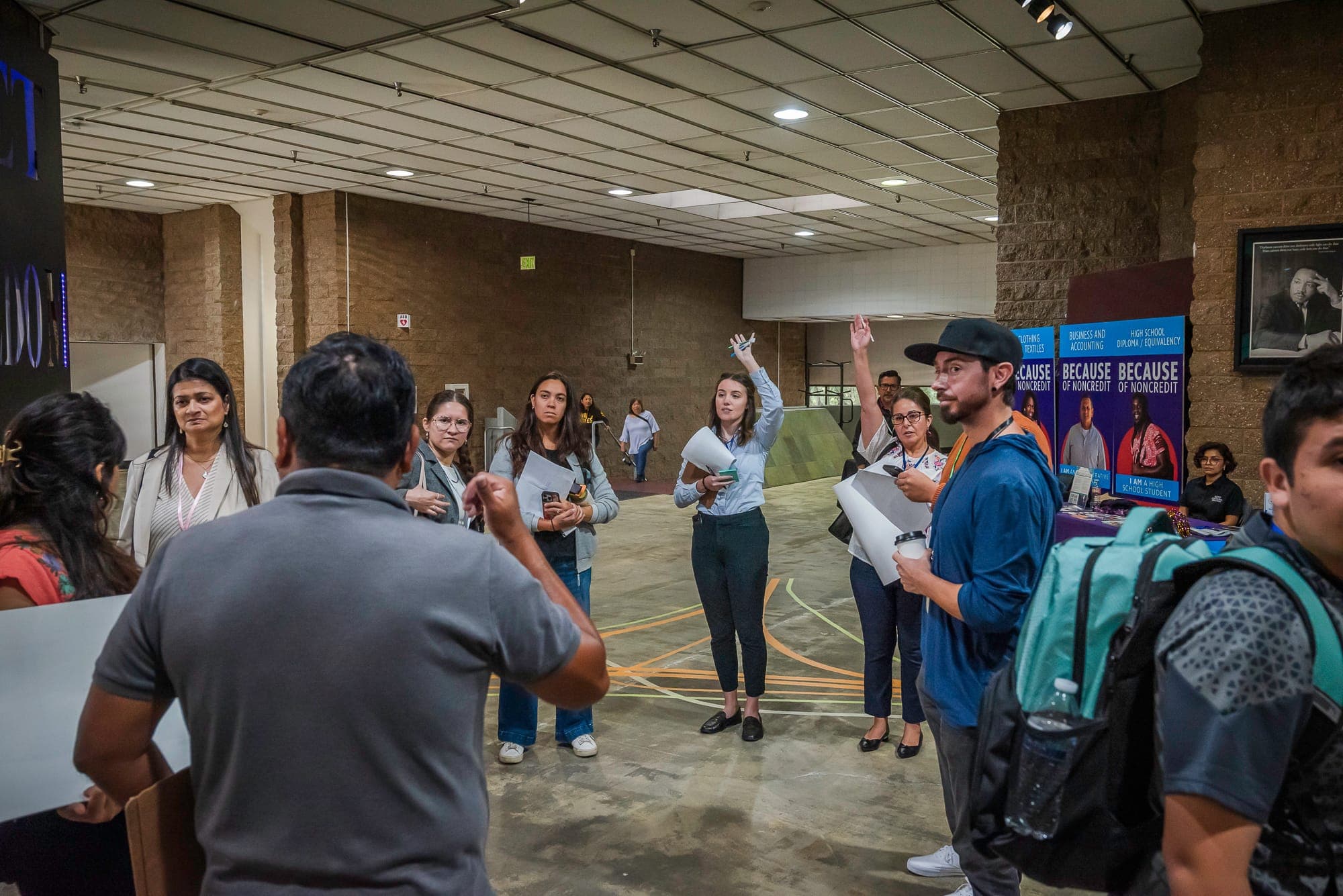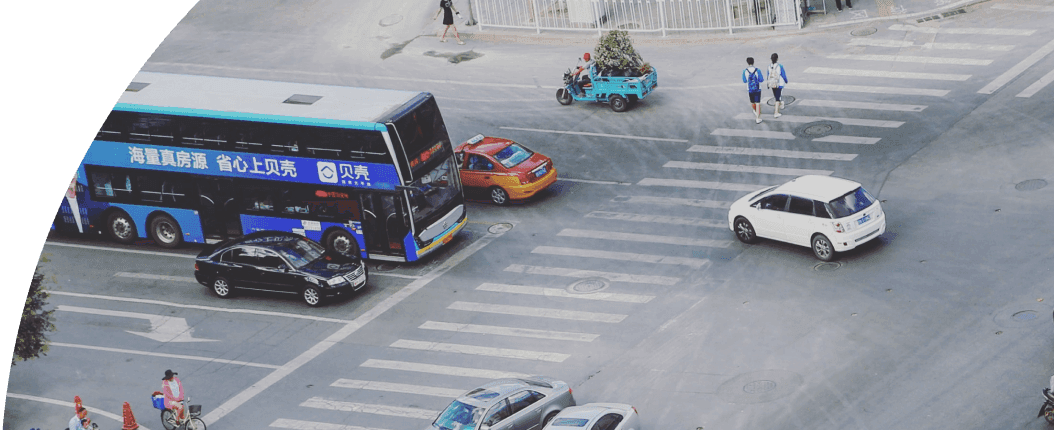
News
By Jordyn Goldson, August 14, 2025
Complete Streets is not just a term to be slapped onto a policy or resolution. Complete Streets is an approach to road design that not only improves the safety for those walking, biking, or rolling, but also boosts local economies, and helps create resilient and vibrant communities. Strong policies are the first and critical step in the larger process of creating roads that are designed for all users, regardless of their mode, age, or ability.
In 2023 and 2024, 43 Complete Streets policies were adopted across the nation as state and local governments try to enable safe road access for a larger variety of users. Many of these policies were from New Jersey, likely influenced by a new statewide policy that gives special consideration to municipalities that have adopted Complete Streets policies when allocating state and federal transportation funds. Though this sparked many local governments in NJ to create and pass their own Complete Streets policies, the policies that came out of towns varied in quality; the average score of NJ municipalities was only 50. Two, however, stood out amongst the rest. Red Bank and Asbury Park in Monmouth County had some of the best policies from 2023-24, scoring 69 and 70, respectively. Both areas have relatively small populations (less than 15,500) but are known amongst Monmouth county residents to have vibrant downtown areas.
When grading Complete Streets Policies, our criteria specifically looks at the content of the policy and not the projects and changes that result. Although we don’t officially evaluate changes on the ground, we know that strong policies help get the ball rolling for such changes. To see how policies are helping enact change, let’s take a look at the policies and the work being done in two NJ locales: Red Bank and Asbury Park.
Policies
Red Bank and Asbury Park stand out especially because of their distinctness from the other NJ policies and NJDOT’s policy, which only scores a 45. Though the statewide policy does a good job of establishing commitment and vision and applying the policy to all projects and phases, it does a much poorer job of prioritizing underinvested and underserved communities, setting criteria for choosing projects, and creating a plan for implementation. In contrast, Red Bank and Asbury Park’s policies scored higher than the state’s policy in many of our Complete Streets Policy Framework criteria, going beyond the state’s policy.
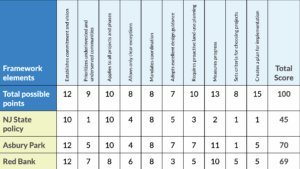
Red Bank and Asbury Park scored near equal or higher in almost every framework principle; they both do a good job of laying the groundwork for measuring progress of projects—something the statewide policy lacked in. They also both do a better job creating an implementation plan.
Red Bank
Red Bank is a small borough with just under 13,000 people and a land area of 1.7 square miles. Though a small area, the downtown district attracts many people from towns all around the county. Due to the commercial shops and restaurants downtown, there’s a high amount of foot traffic. There’s also lots of vehicular pass-through traffic that’s associated with the NJ State Route 35 and Garden State Parkway exit just outside of the borough.
Red Bank’s proximity to the highway and to the train station, as well as its historic character and charm, have made it an enticing borough to live in and commute from; the housing demand in the borough has been increasing steadily. With all the different kinds of traffic already going through the area, Red Bank has a large incentive to ensure walkability and pedestrian safety, not just downtown, but throughout the entire community. A Complete Streets policy has helped Red Bank develop safer multimodal transportation options as the borough continues to grow.
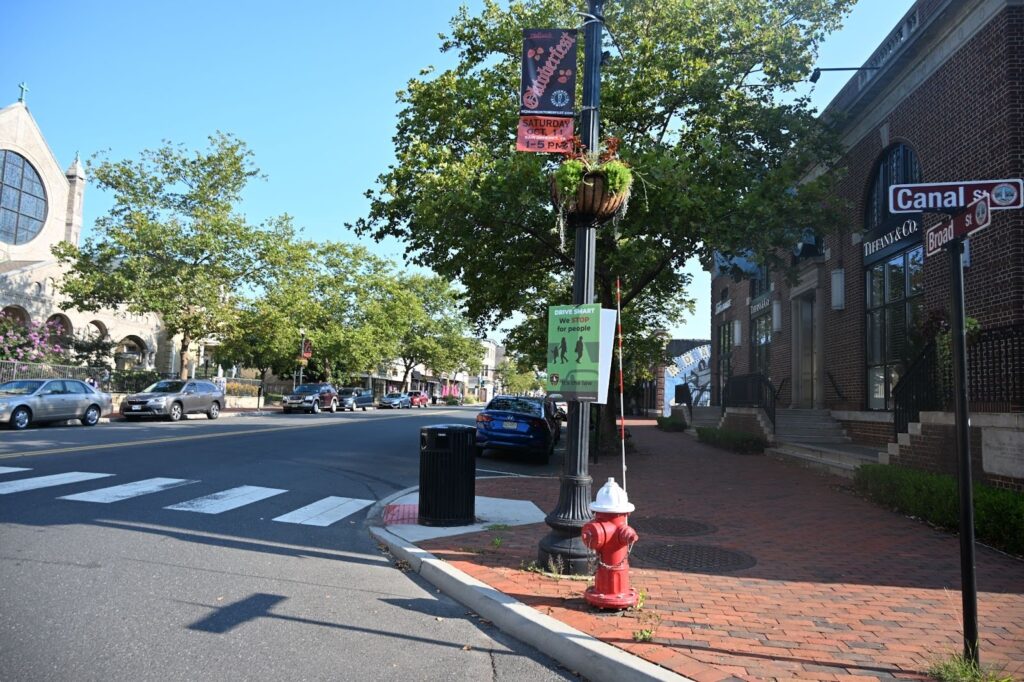
Red Bank began making meaningful progress under its 2018 Complete Streets resolution, using it as a springboard for several community-driven projects. In 2023, the town tested temporary bike lanes through a safety demonstration project aimed at gathering feedback and evaluating permanent changes—explicitly citing the 2018 policy as a guiding framework. That same year, Red Bank announced plans for pedestrian safety upgrades like bump-outs along heavily-trafficked Shrewsbury Avenue. They also added a new bike lane on Harrison Street, a residential corridor.
While the 2018 resolution helped establish a vision and support tactical urbanism efforts, it lacked enforceability. The newly-adopted Complete and Green Streets ordinance changes that. It requires all new development projects to implement Complete Streets practices and establishes an advisory committee to investigate pedestrian and bike safety, while also promoting green infrastructure like shade trees and bioswales to make streets cooler and more resilient.
Under their new 2023 Complete Streets policy, Red Bank has started to see new plans and development for projects. Monmouth Street, a road that connects downtown to the train station, is undergoing updates to its pedestrian infrastructure, and the city is developing a transit-oriented, mixed-use space near the station. Additionally, Red Bank received a $10,000 grant for a quick build to improve pedestrian safety at the intersection of Leighton Avenue and River Street, a quieter part of the town.
Asbury Park
Asbury Park is a bit denser than Red Bank, with just under 15,200 residents and a land area 1.4 square miles. Asbury Park is well known for its boardwalk, which houses the city’s Convention Hall and Carousel, along the shore. As a town that becomes packed in the summer time with lots of foot traffic, providing multiple modes of transportation for people to get from downtown to the shore is imperative.
Asbury Park has long used one-way streets and stop signs to manage downtown traffic, but the city is now shifting toward new safety improvements like adding traffic signals and reconfiguring intersections at Third and Fourth Avenues. These changes build on a foundation laid by the city’s 2015 Complete Streets policy. In the years since, Asbury Park has updated its Master Plan (2017), created a Plan for Walking and Biking (2018), and launched several safety projects, including a traffic signal with pedestrian bump-outs at Prospect and Bangs Avenues, currently underway. While the 2015 policy supported these efforts, it lacked requirements for private development and long-term oversight. The new 2024 ordinance addresses those gaps—applying to both public and private projects, formalizing the role of advisory boards, and including a planned policy audit in 2026 to ensure continued accountability.
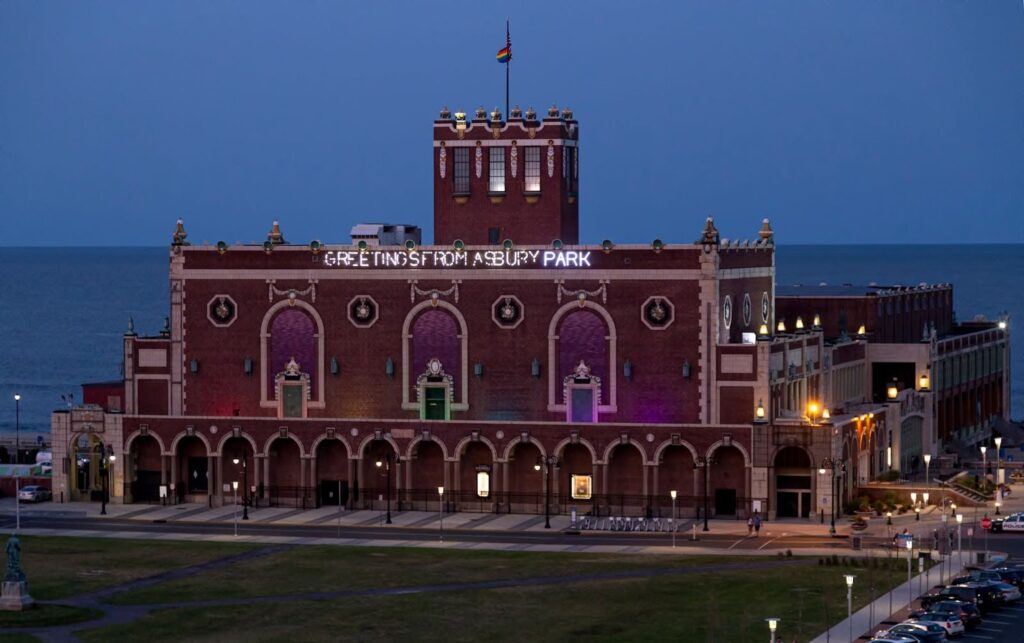
As a result, Asbury Park has a number of ongoing projects that ensure their streets accommodate multiple modes of transportation. On Asbury Avenue, the city is narrowing the roadway as a traffic calming measure and adding additional protected bike lanes. In a similar project, the city is reconstructing Memorial Drive and will add a protected bike lane to that road as well. Through these projects, the city hopes to encourage residents to choose more active modes of transportation.
Both Asbury Park and Red Bank demonstrate that while a policy alone isn’t a silver bullet, it can be a powerful tool for shaping long-term, people-centered change. Their progress shows how clear, enforceable policies—paired with reflection and updates over time—can turn good intentions into tangible improvements for residents, businesses, and the broader community.
Related News

© 2025 Smart Growth America. All rights reserved
Site By3Lane Marketing
